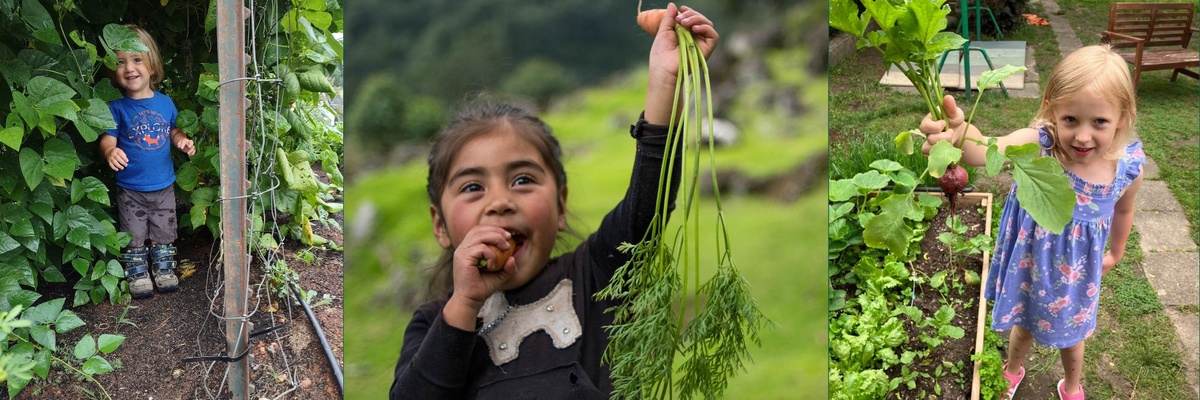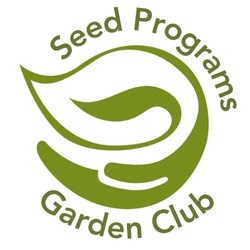The first step is to determine the why, and who of your garden.
For this step you will decide why you are creating a garden club and what you and the club members hope to learn or accomplish with the garden club. Some potential goals include:
- Creating a living classroom to educate children about gardening
- Improve the food literacy of club members
- Grow flowers to attract and increase pollinators
- Grow local fruits and vegetables for children or community members to eat.
- Create a sensory experience for children
- Promote physical activity and mental health
- Create team building and cooperation skills
Once you know why you want to create a garden, you next need to identify a gardening manager. This person (or group of people) will be the main individual responsible for acquiring supplies and resources, organizing gardening activities, coordinating schedules, and ensuring the garden’s purpose is being achieved.
The ages, interests, and physical limitations of the club members should be understood. The number of participants should also be known before making gardening plans.
Schedule should be determined at the start of the program. How much time can the manager(s) and club members dedicate to the program? Will there be any long breaks for vacations or holidays when garden maintenance will be lacking?
The next step is to determine the where of your garden project. You will need to ensure you have long-term permission to use the space for gardening. Some important things to consider include:
- Accessibility: the location should be convenient, safe, and accessible for all participants.
- Water: the location should be close to a water source.
- Sunlight: the location should be in full sunlight for at least 8 hours a day.
- Soil: the garden should have quality soil and drainage. Planter boxes and bags of soil can be used or you can create an in-ground garden .
Next, you will determine the what, when, and how of your garden project.
To determine what and when to plant, the USDA Plant Hardiness Zone Map and the Almanac Planting Calendar are useful guides. You can enter your zip code and receive a table indicating what and when to plant for the spring and fall planting seasons in your geography.
Draw the layout of your garden on graph paper for rough measurements of the space. Google Earth can also help you visual the space aerially. You can then make a list showing where you want to plant each plant in the garden. Drawing your garden plan will help you visualize everything you need and budget your materials. Remember to think about irrigation, planting space, and growth structure. Planning the garden is a great activity for the garden club members.
You should also determine where you will store your gardening supplies and if there are any animals in the area that could damage your garden.
Program sustainability is also important to consider so that your garden club can continue beyond the first year. Consider a long-term plan at the start of the program.
Once everything is planned, you are ready to create your garden!
Start by purchasing the materials you identified in your garden plan. Aim to not spend your entire budget immediately so that you have some extra funds to use as you start the garden club and learn what is missing. Some materials and supplies you might need to start your project include:
- Planter boxes and raised beds
- Bags of garden soil and compost
- Irrigation supplies: hose, watering cans, or a drip irrigation or sprinkler system
- Gardening tools: This would be a mix of a shovel, trowels, pruning shears, hand rakes, plant supports (for climbing plants), trays (for transplants), gloves, buckets, and spray bottles.
- Composting supplies
- Seeds: Seed Programs can support some of your seed needs.
Once you have your materials, you can start creating the garden. Use your plan to arrange the layout of the planter boxes and raised beds. Garden club members can participate in creating the garden and mixing the soil. Before planting make sure the planting space is free of weeds and the soil is not compacted.
Once the beds are ready, you can plant your garden. This can be done by direct seeding or transplanting. The Almanac Planting Calendar provides tips on which planting method might be appropriate for each crop and season in your geography. Water the soil before and after planting.
This final step is to maintain the garden with your club members. Once the garden is created and planted, then you are ready for general maintenance activities. This would include watering, weeding, and keeping the soil nutrient rich.
As crops mature, they will become ready to harvest. This is an exciting time for gardening club members as they are finally able to enjoy the fruits (and vegetables) of their labor! Wash the produce before eating it, especially if compost is used. The children can be involved in collecting the vegetables and preparing them to eat. Then they can sit and enjoy the taste of the different food grown in their garden.
Educational activities can be run throughout the gardening club program. The children can participate in all the steps in planning, creating, planting, and managing the garden. They can be encouraged to explore the garden using all their senses. They can enjoy a quiet moment in the garden and try to listen for all the sounds that are present. They can also draw the different crops and show how they change as they grow. Some additional topics can include:
- Plant identification, germination and pollination
- Insect and pest identification
- Plant needs
- Soil science
- Water Cycle
Many resources exist to support your educational activities.
We hope you enjoy your garden club and continue the club for years to come. Happy Gardening!









 "Hello Gardeners!"
- Robyn Love, President of Seed Programs
"Hello Gardeners!"
- Robyn Love, President of Seed Programs
